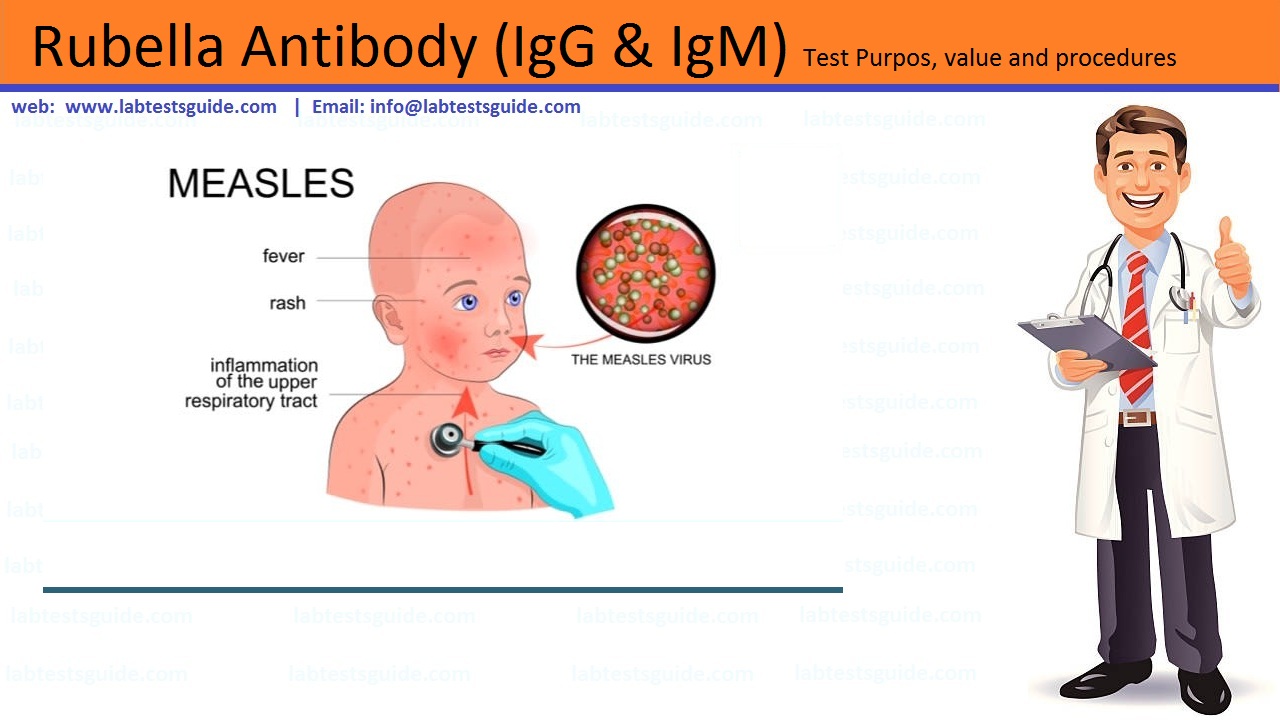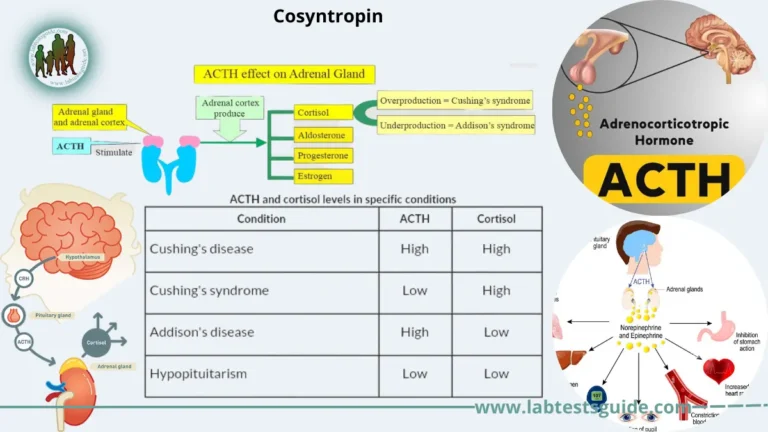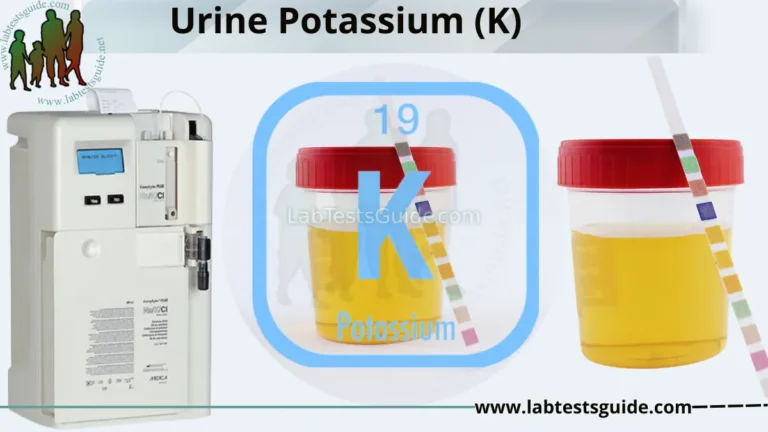Also Known As: German Measles. Three-day Measles, 3-day Measles
Formal Names: Rubella Antibodies, Rubella IgG, Rubella IgM
Test Panel: TORCH profile, Toxoplasmosis , Herpes Simplex , Cytomegalovirus , syphilis , VDRL,

Why Get Tested:
- It diagnoses the rubella infection.
- It is done to find the immune status of the patient.
- It is advised in the pregnant ladies.
- It may be advised in low weight baby.
When to Get Tested:
- when a pregnant woman has symptoms of rubella, such as fever and rash.
- Prior to or at the beginning of a pregnancy to verify immunity
- when a newborn shows signs of abnormal development or birth defects that may be caused by an in utero infection.
- whenever there is need to verify a recent rubella infection or to verify immunity.
Normal Values:
- Latex agglutination method = This is rapid and convenient.
- HAI (Hemagglutination inhibition method)
- <1:8 = No immunity to infection.
- >1:20 = Immunity to rubella infection.
- The disadvantage is that it detects both IgM and IgG.
- ELISA
- IgM = >1.1 IU/mL = Indicate Active infection.
- IgG = <7 IU/mL = Indicate No immunity to rubella.
- IgG = >10 IU/mL = Indicate Immunity to rubella.
- Semiquantitative immunoassay method
- This is indirect enzyme labeled immunoabsorbent assay using microwells of a solid phase.
Immunology:
- There is the formation of antibody IgM and IgG against rubella.
- If IgG and IgM are negative then the patients never suffered from rubella infection and not been vaccinated.
- IgM appears in a few days to weeks after the onset of rubella rash.
- IgM disappears in about 6 weeks.
- For active disease advise IgM.
- To identify congenital infection advise IgM.
- IgM is necessary to label acute infection.
- IgM can not cross the placental barrier, therefore the presence of IgM in the neonatal period is diagnostic of congenital rubella syndrome.
- In the newborn for the confirmation of the rubella infection, IgM will be positive at least for 6 months.
- IgG persists at a low level and detectable for years.
- For immune status advise IgG.
- IgG titer of 1:8 or more indicates past infection and future protection from the rubella infection.
- Titers of 1:8, 1:16, 1:64 and 1:512 or greater are found in acute and past infections.
- To confirm acute infection, then advise IgM on the same serum sample.
- IgG can cross the placental barrier and enter into the fetal circulation.
- For immune status advise IgG.
- Acquired infection:
- In the case of primary rubella infection, the presence of IgM and IgG antibodies are associated with the appearance of clinical signs and symptoms.
- IgM detectable a few days after the onset of S/S and reach a peak level at 7 to 10 days.
- These antibodies persist but decrease in concentration over the next 4 to 5 weeks until these antibodies are not detectable.
- IgG remains present and protective indefinitely.
- Congenital infection:
- As IgG can cross the placental barrier so cannot distinguish in the fetal or maternal IgG antibodies in the neonatal blood.
- IgM testing is not valuable as it can not cross the placental barrier.
- Diagnostic tests methodology:
- Latex agglutination.
- Hemagglutination inhibition (HAI).
- Passive hemagglutination (PHA).
- Enzyme Immunoassay for IgM.
- Enzyme immunoassay for IgG.
- Radioimmunoassay (RIA).
- Fluorescent immunoassay (FIA).
Recent Tests:
Possible References Used






